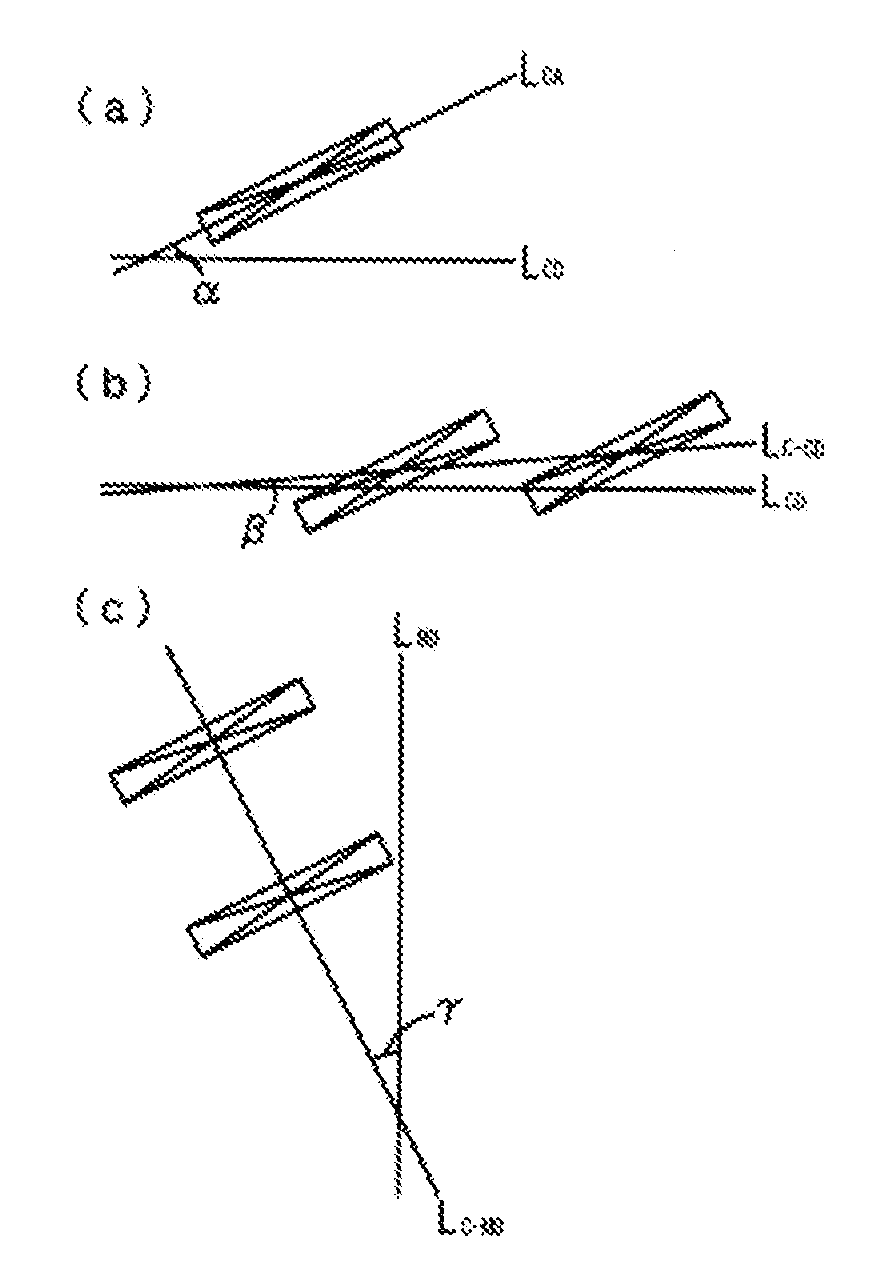Nonwoven fabric and method for manufacturing same
a nonwoven fabric and manufacturing method technology, applied in the field of nonwoven fabrics, can solve the problems of poor texture of stretchable nonwoven fabric, inability to clearly recognize information, source, medicinal component and design, etc., and achieve excellent extensibility, excellent extensibility, and distinctness of compressed region
- Summary
- Abstract
- Description
- Claims
- Application Information
AI Technical Summary
Benefits of technology
Problems solved by technology
Method used
Image
Examples
example 1
[0071]The following fibers were used in a proportion of 100 mass %: side-by-side type latent crimpable fibers (fineness: 2.2 dtex; and fiber length: 51 mm) composed of a polyester (melting point: 250° C.) and a low-melting-point polyester (melting point: 230° C.). A carding machine was used to open the fibers. Next, a cross lapper was used to form a cross-laid web (mass per unit area: 60 g / m2). Thereafter, a twill weave net support made of polyester and having a mesh of 90 was used to transport the web while the fibers were entangled with each other by a water jet. In this way, a hydroentangled fiber web was formed. Conditions for the hydroentangling were as follows:
[0072]1. Shower: 0.1 MPa onto a single surface of the web, which will be referred to as the surface A
[0073]2. 5.5 MPa onto the surface A from a nozzle plate having a nozzle diameter of 0.13 mm, and a nozzle pitch of 0.6 mm
[0074]3. 5.5 MPa onto the surface reverse to the surface A, which will be referred to as the surface...
example 2
[0083]A nonwoven fabric was manufactured in the same way as in Example 1 except that the hydroentangling conditions were changed as described below, the temperature of the hot air dryer was set to 185° C. when the latent crimpable fibers were crimped to form the highly crimped fibers, and the area of the hydroentangled fiber web was contracted by 35% in total in the machine direction and the cross direction. In the compressed regions of this nonwoven fabric, no fibers were melted and bonded to each other.
[0084]1. Shower: 0.1 MPa onto the surface A
[0085]2. 4.0 MPa onto the surface A from a nozzle plate having a nozzle diameter of 0.13 mm, and a nozzle pitch of 0.6 mm
[0086]3. 5.5 MPa onto the surface B from a nozzle plate having a nozzle diameter of 0.13 mm, and a nozzle pitch of 0.6 mm
example 3
[0087]A nonwoven fabric was manufactured in the same way as in Example 1 except that the hydroentangling conditions were changed as described below, the temperature of the hot air dryer was set to 185° C. when the latent crimpable fibers were crimped to form the highly crimped fibers, and the area of the hydroentangled fiber web was contracted by 45%. In the compressed regions of this nonwoven fabric, no fibers were melted and bonded to each other.
[0088]1. Shower: 0.1 MPa onto the surface A
[0089]2. 4.0 MPa onto the surface A from a nozzle plate having a nozzle diameter of 0.13 mm, and a nozzle pitch of 0.6 mm
[0090]3. 5.0 MPa onto the surface B from a nozzle plate having a nozzle diameter of 0.13 mm, and a nozzle pitch of 0.6 mm
PUM
| Property | Measurement | Unit |
|---|---|---|
| pressure | aaaaa | aaaaa |
| length | aaaaa | aaaaa |
| length | aaaaa | aaaaa |
Abstract
Description
Claims
Application Information
 Login to View More
Login to View More - R&D
- Intellectual Property
- Life Sciences
- Materials
- Tech Scout
- Unparalleled Data Quality
- Higher Quality Content
- 60% Fewer Hallucinations
Browse by: Latest US Patents, China's latest patents, Technical Efficacy Thesaurus, Application Domain, Technology Topic, Popular Technical Reports.
© 2025 PatSnap. All rights reserved.Legal|Privacy policy|Modern Slavery Act Transparency Statement|Sitemap|About US| Contact US: help@patsnap.com



